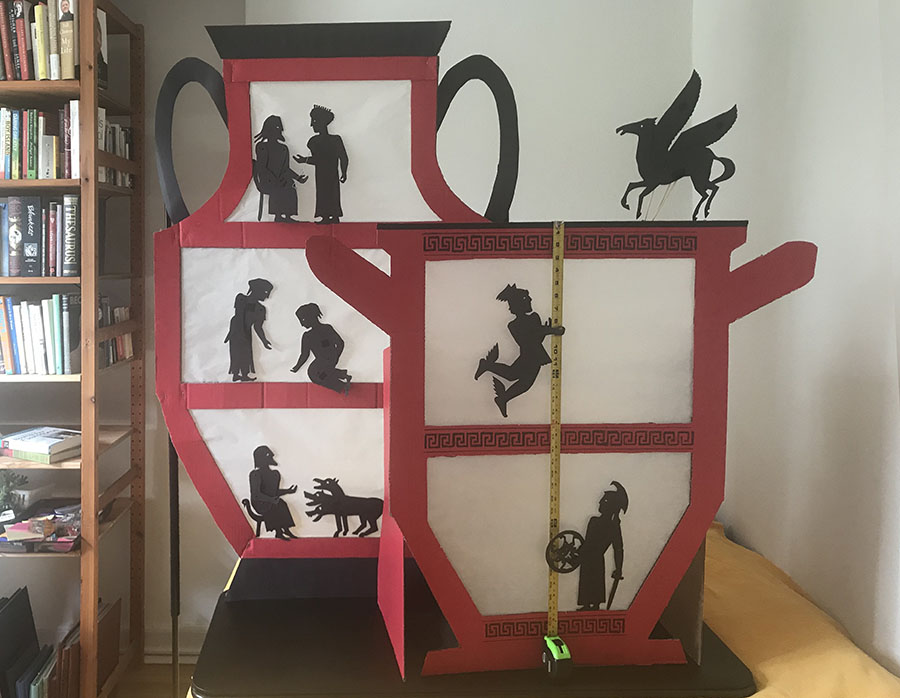
One of my most-read blog posts is about using an overhead projector for shadow puppetry, which is full of fun tricks that may be used when teaching Greek myths in the classroom. But you don’t need an overhead projector and a big screen to act out Greek myths. In this blog post you will find instructions for screens in the shape of a Greek pot or vase, which you can use at home. The two or three transparent sheets above each other represent parallel (though connected) worlds, perfect to act out the interactions between gods and mortals. They are particularly great for myths involving the underworld, such as the story about the abduction of Persephone, which is used here in the illustrations.
- Greek Mythology (all Past Times resources about Greek mythology)
Greek vases
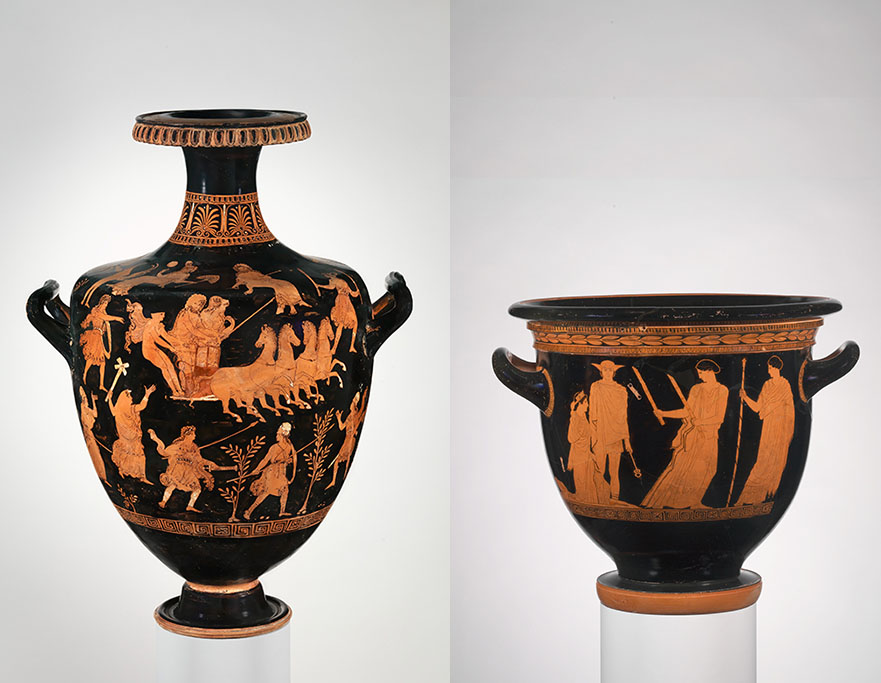
The ancient Greeks made pots from clay, that were elaborately decorated, often with mythological scenes and figures. They are usually referred to as Greek ‘vases:’ hollow containers of any size, mainly used for storage, mixing, eating and drinking. The earlier pottery was painted in the “black-figure” style, showing black silhouettes on a terracotta background. The later “red-figure” paintings are the reverse, picturing terra-cotta figures on a black background. The shadow screens demonstrated here have the shape of a Greek “amphora” or storage jar, and a “krater” or mixing vessel, used for diluting wine with water. Although the puppets are meant to look like black-figure paintings, they are actually modelled after the later red-figure paintings, which are more elaborate and natural-looking.
- Greek vase painting: an introduction (SmartHistory)
- A Story on a Vase (Getty museum lesson plan K-5)
What you need
Both pot-shaped screens are made of red tri-fold cardboard display boards, available in office supply or craft-stores. Alternatively, you may be able to find a large empty box in a store for household appliances. To make the tall amphora-style screen, you will need supports on either side. I have used spare lamp poles, but you can also tie the middle of the vase to the backs of two straight chairs. It may be easier, however, to choose for the krater-sized pot, which has its own cardboard supports, and is easier to handle and store. Usually you don’t use more than two parallel worlds at the same time.
- Red trifold display board 36″x48″ or a large box that is at least 36″ high.
- 15″ wide parchment paper or 18 tracing paper cut to size
- Normal or black painters tape (3/4″ or 1″)
- Velcro black sticky back 3/4 inch tape
- Box cutter and cutting mat or rug
- Glue
- Black permanent marker for decorating
- Black poster board for decorating (optional)
- Bookends and binder clips to attach to the krater cardboard supports (optional)
- Large stapler or split pins to secure the reinforcement on the amphora’s corners
- Two lamp poles and binder clips to support the amphora screen, or two chairs with straight open backs
Amphora (three screens)
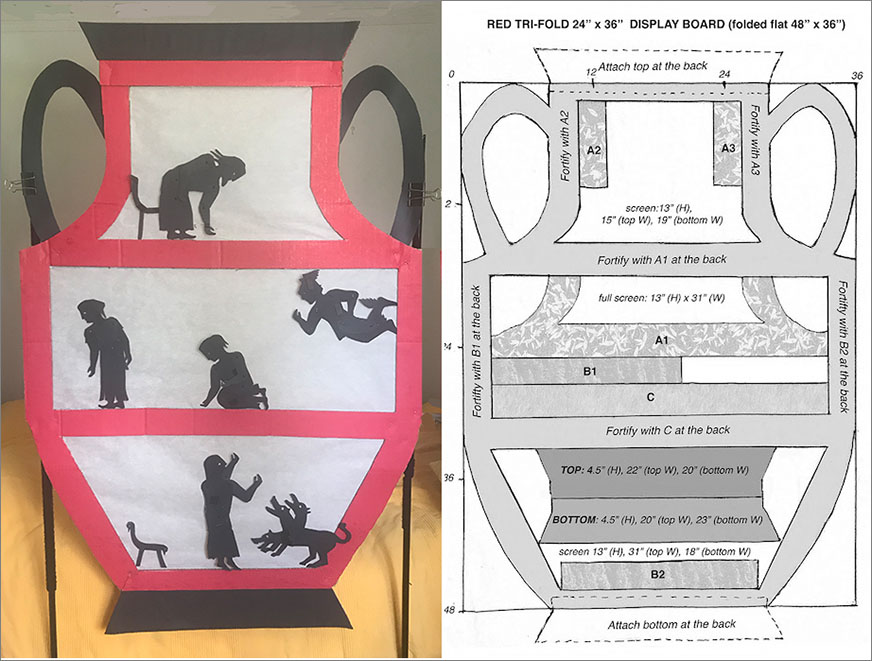
Step-by-step instructions for making the amphora-shaped screen
- Fold the display board open and put it down with the back side facing up
- Use painters tape to cover the slits in the cardboard that make it fold.
- Outline the pattern of the vase on the back of the display board using a large ruler; then cut all parts out with a box cutter.
- Attach the top and bottom to the back of the vase using duct tape.
- Cut three 34″x 15″ sheets of parchment or tracing paper and cut the ones for top and bottom to size, leaving 1″ extra to overlap with the cardboard. Attach the sheets with painters tape to the back of the three open frames.
- The top two screens should be fortified with an extra layer of cardboard (A1-3 for the top and B1-2 and C for the middle). Glue them to the back and use a big stapler or split pins in the corners to secure them.
- Stick two strips of rough or bristly velcro (the “hook” side) underneath all three screens. (See for an example the back of the krater below). These strips will be used to secure holding rods of the puppets to the screen, which are wrapped with a piece of soft velcro (the “loop” side) at the bottom.
- Decorate the amphora with black poster board and/or black marker (see below).
- Attach the sides to the lamp poles with velcro or binder clips or to the backs of two chairs with strings (punch holes in the sides for this).
Krater (two screens)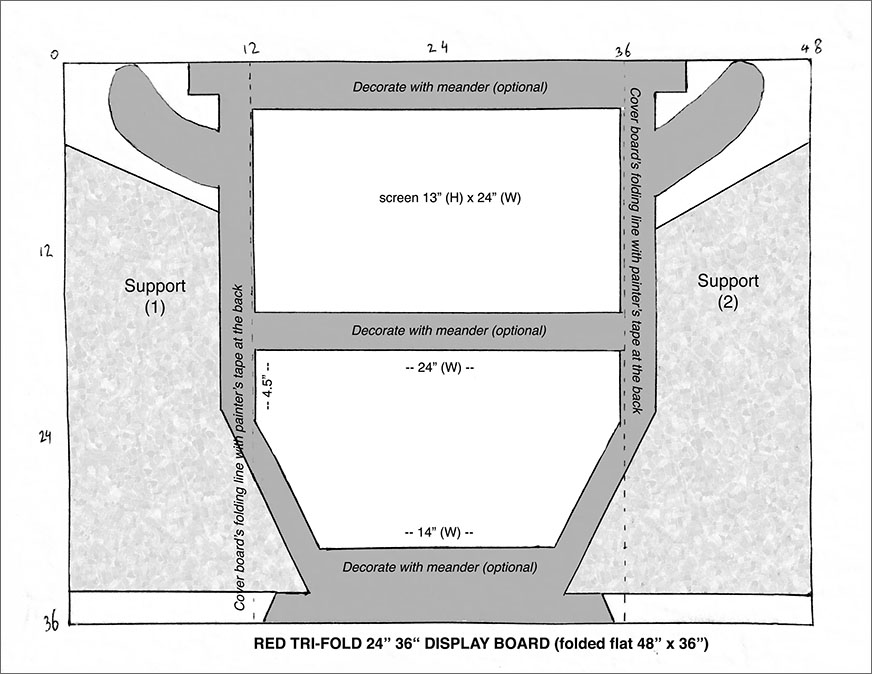
Step-by-step instructions for making the krater-shaped screen
- Fold the display board open and put it down with the back facing up.
- Use painters tape to cover the slits in the cardboard that make it fold.
- Outline the pattern of the vase on the back of the display board using a lage ruler (I used painters tape instead of marker in the example below). Cut all part out with a box cutter and keep the two large side pieces separate.
- Cut two 34″x 15″ sheets of parchment or tracing paper and cut the one for the bottom to size, leaving 1″ extra to overlap with the cardboard. Attach the sheets with painters tape to the back of the two open frames.
- Stick two strips of rough velcro (the “hook” side) underneath the screens. (See the example below). These strips will be used to secure holding rods of the puppets to the screen, which are wrapped with a piece of soft velcro (the “loop” side) at the bottom.
- Attach the two side supports to the back of the screen with duct tape, leaving 1 1/2″ of space on either side of the pot. Use the duct tape on both sides of the support to make it secure.
Decorating
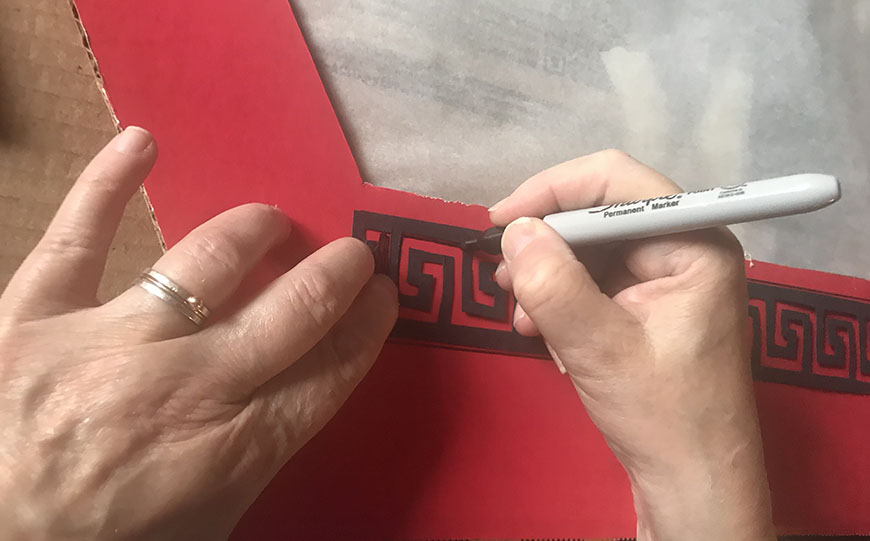
If you do an image search for Greek vases in museums you will see that they are always decorated with geometric patterns. For the amphora-shaped screen I followed an example in the British Library and covered the top, bottom and handles with black poster board. Feel free to decorate your own screen the way you like it, using examples of pots you find online. You will find that the ancient Greeks often used a linear pattern that is called a “meander,” of which there are many different types. You can download a pattern that can be cut out and traced with black marker below.
The ultimate decoration: puppets!
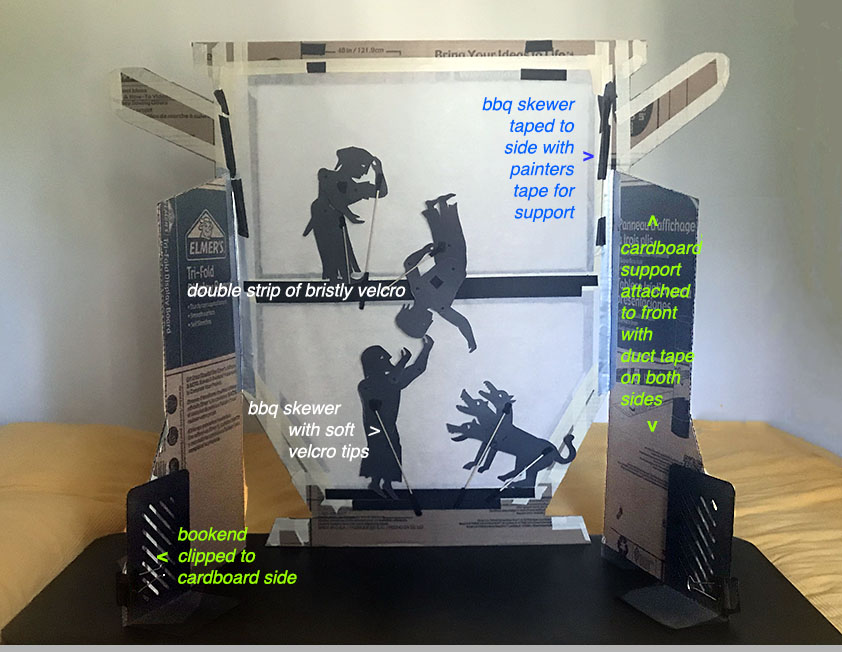
To handle puppets on the screens it is best to work together with two to four siblings or friends. To create sharp shadows for the audience the puppets need to be pushed against the paper, which is why it is important to secure the screen to the table with bookends or tape. In the example above all puppets are kept against the screen by two holding rods, which are made of barbecue skewers with soft velcro tips. If you act out your stories during day time putting the screen before a sunny window may be enough. If not, you can use small desktop lamps, book lights, or a cell phone torch light (see light and screen).
- Download puppets: Gods and Goddesses
- Nymphs, Heroes, and Other Creatures
Alternative screens, or none at all
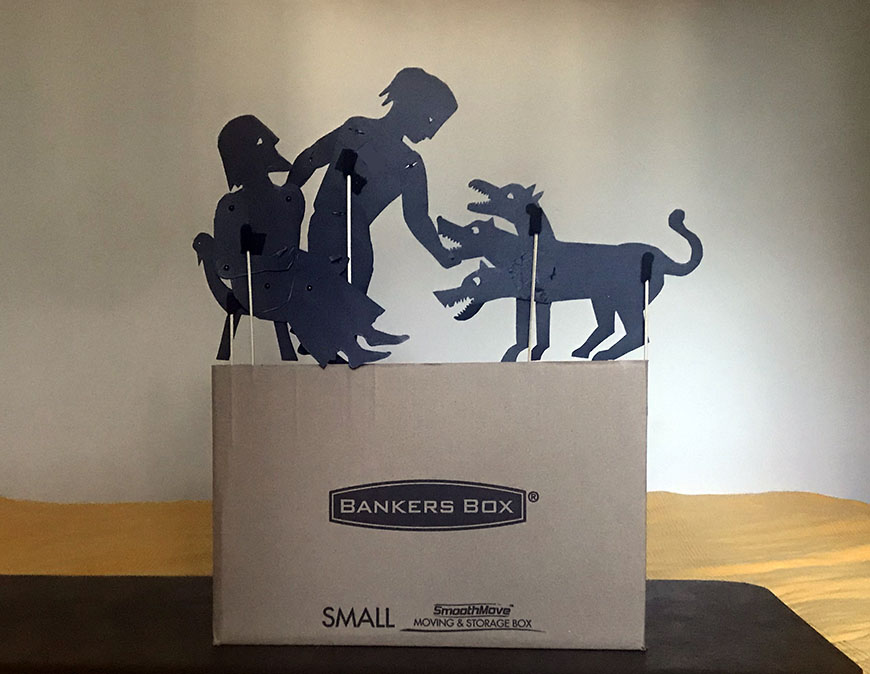
Of course you do not need a vase-shaped shadow theater with more than one transparent screen to act out Greek myths. You can make a simple screen from a box, holding your puppets above it when they are on the Olympus, or when the box represents the Underworld. In fact you do not need a screen at all if you use the puppets as hand-held silhouette puppets for storytelling and play in a group. Alternatively, you can hide behind a table and move the puppets above the surface. You could even use the silhouette puppets in an online class over zoom or google hangout! More about that in our next blog post.


A very nifty construction, beautifully done! The detailed instructions are easy to follow. Thanks for sharing!